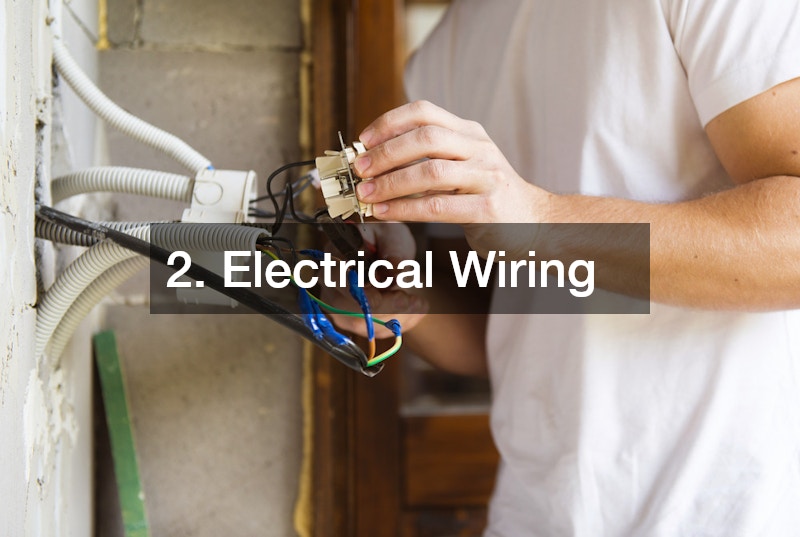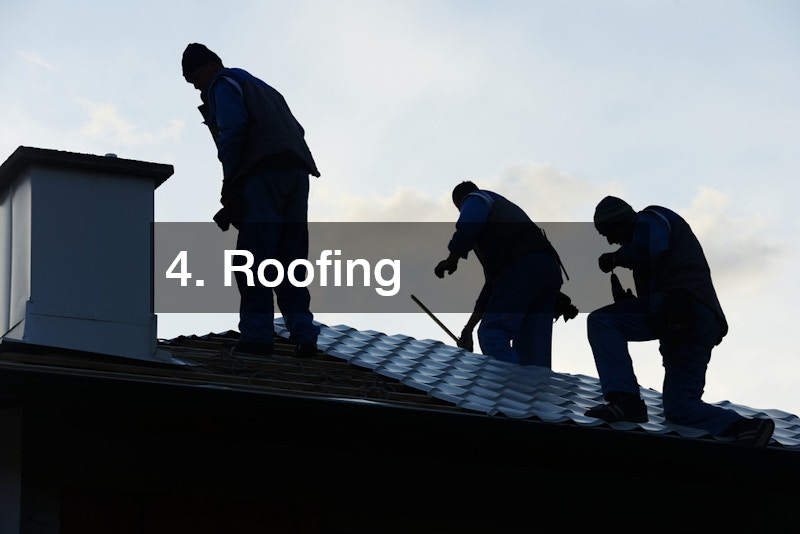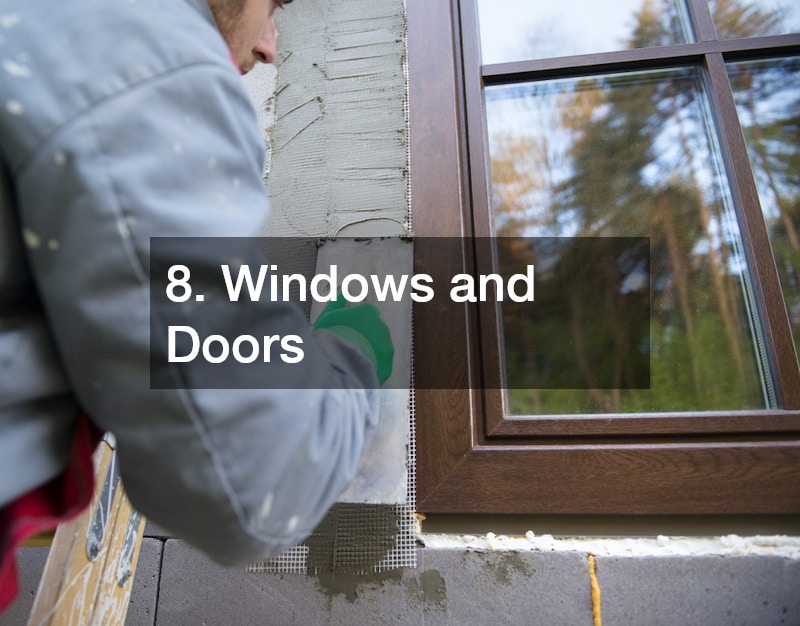Old homes hold a unique charm, often boasting classic architecture, intricate woodwork, and vintage details that are hard to find in modern construction. However, with that charm come challenges. Aging materials, outdated systems, and years of wear and tear can make living in an older home both costly and complex if you aren’t prepared. Whether you’re considering purchasing an old house or you already live in one, understanding its potential issues can help you make informed decisions about maintenance, repairs, and upgrades. In some cases, expert home renovations may be necessary to preserve and modernize these beautiful homes without losing their character.
This guide walks you through the ten biggest issues commonly found in older homes and offers insights into how to address them effectively. Tackling these issues one by one can make the process manageable, allowing you to enjoy the charm of your home without compromising on comfort and safety.
1. Structural Issues
Structural integrity is the cornerstone of a home’s safety and durability. Many older homes were built on stone or brick foundations that have settled over time, leading to cracks, shifts, and other structural weaknesses. These issues, if left unaddressed, can gradually worsen, compromising the stability of the entire building and resulting in costly repairs. For homeowners of older properties, regular assessments and proactive reinforcement are crucial to maintaining the structural soundness of the house.
Identify Weak Points
Structural issues in older homes are often the result of gradual settling, foundation shifts, and natural wear over the years. Common indicators of foundational damage include cracks in the walls, uneven floors, and doors that stick or fail to latch properly. In some cases, sloping floors or sunken areas of concrete may be observed, which is often caused by soil settling beneath the foundation. Concrete leveling is a highly effective technique used to lift and stabilize these uneven surfaces by injecting a specialized material beneath the concrete, restoring evenness and reducing stress on the foundation. If you notice any of these signs, it’s essential to hire a structural engineer who can evaluate the home’s foundation and advise on appropriate repairs or reinforcements. Foundation repairs are particularly critical in maintaining the home’s overall integrity.
Repair and Reinforce
When foundational problems are confirmed, the solutions can range from simple fixes, such as sealing small cracks, to major undertakings like installing foundation piers or conducting a complete foundation overhaul. Additionally, many homeowners consult concrete leveling companies for solutions to correct uneven surfaces and improve stability. This technique can prevent further foundation stress, enhancing both the safety and longevity of the property. Routine inspections, effective moisture management, and proper soil grading around the home can prevent further structural issues, adding years of stability and safety to your older home.
2. Electrical Wiring

Electrical systems in older homes often fall behind today’s safety standards and energy demands. Wiring that was acceptable decades ago may now pose fire hazards and fail to meet the power needs of modern households. Overloaded circuits, outdated fuse boxes, and ungrounded outlets are common issues that require attention to prevent accidents and increase convenience.
Assess Outdated Systems
Many older homes still operate on antiquated electrical systems, such as knob-and-tube or aluminum wiring, which may pose safety risks and fail to meet current electrical demands. A professional electrician can assess the wiring, inspect outlets, and evaluate if the circuit panel is sufficient for your needs.
Upgrade for Safety
Upgrading the entire electrical system may be necessary for homes with dangerous or insufficient wiring. Installing a modern breaker panel, grounding all outlets, and replacing outdated wiring will ensure the system can handle modern appliances safely. Adding surge protectors and arc-fault circuit interrupters (AFCIs) can provide additional safety.
3. Plumbing Systems

Plumbing systems in older homes come with unique challenges that can lead to frequent repairs, water quality concerns, and even health risks. Outdated pipes made from galvanized steel, lead, or cast iron are common in these properties and are particularly susceptible to corrosion, blockages, and leaks. Addressing these issues by modernizing plumbing components can not only improve water flow but also prevent costly damage and ensure safe, high-quality water throughout the home.
Recognizing Problematic Pipes and Assessing the Need for Replacement
Older pipes often show wear and tear that can affect water quality and plumbing efficiency. Corrosion, rust, and leaks are typical in pipes made from outdated materials like galvanized steel or lead. Common warning signs include discolored or metallic-tasting water, frequent clogs, or visible corrosion on exposed pipes. Such issues require attention, as corroded pipes may eventually lead to leaks or contamination.
If your home shows these signs, consulting a licensed plumber is a smart step. They can assess which pipes need replacing and provide guidance on the best modern materials, such as PVC, PEX, or copper. Upgrading to these materials enhances durability, improves water quality, and increases the overall reliability of your plumbing system.
Modernizing for Enhanced Water Flow
Replacing outdated pipes with modern materials is an effective way to enhance water flow, reduce the risk of leaks, and improve overall water quality. PEX, PVC, and copper are commonly recommended as they are less prone to corrosion and have longer lifespans compared to older pipe materials. Upgrading also helps prevent blockages and supports a steady, efficient water supply throughout the home.
Identifying Septic System Problems
For homes not connected to municipal sewage, a septic system plays an essential role in managing wastewater. Septic tanks and leach fields handle waste treatment but can become problematic as they age. Without regular maintenance, septic systems are susceptible to backups, clogs, and leaks, which can lead to unpleasant odors, water pooling in the yard, and potential health hazards.
Signs of septic system trouble include slow drainage, foul odors near the tank or leach field, and soggy areas in the yard. To prevent severe issues, it’s advisable to schedule regular septic system services, including inspections and pumping every three to five years. Routine maintenance can help avoid costly repairs and extend the life of your septic system, ensuring it functions efficiently.
Maintaining a Safe and Reliable Water Source
In older homes with private wells, maintaining a reliable water source is critical. Wells can develop issues such as sediment buildup, reduced water pressure, or contamination over time. Regular inspections and well services can prevent these issues and help ensure a steady, safe water supply for the household.
Older wells should be tested at least once a year to check for contaminants like bacteria, nitrates, and heavy metals. If contamination is detected, well services can provide solutions, including filtration systems or chlorination treatments. Regular maintenance also helps ensure that the pump, pressure tank, and other well components are functioning correctly, which supports consistent water flow and reduces the risk of unexpected breakdowns.
4. Roofing

A home’s roof serves as its primary defense against the elements, and an older roof may show signs of wear that can lead to water damage, energy loss, and structural issues. Older roofing materials may also lack the durability of modern alternatives, necessitating more frequent roof repairs and inspections to keep your home dry and protected.
Inspect for Damage
Aging roofs often present problems like missing shingles, leaks, or inadequate insulation, which are particularly common in older homes. Regular inspections are key to detecting issues early on and preventing them from becoming major, costly repairs. Some of the most common roofing issues include loose or missing shingles, visible water stains on the ceiling or attic, mold growth, and leaks around roof fixtures like chimneys or vents. Conducting routine inspections or hiring a professional roofing contractor can ensure that small issues are caught before they cause significant damage.
When Repairs Are Enough
For minor damage, such as a few missing shingles or leaks around the chimney, roof repairs may suffice. Small patches or repairs to the flashing may restore the roof’s function without the need for a full replacement. If caught early, these issues are usually inexpensive to fix, and the roof can continue to protect the home without major expense.
Knowing When to Replace the Roof
However, if the roof has significant wear, such as widespread leaks, missing shingles, or sagging areas, it may be time to consider a full replacement. Extensive damage often means the roofing system is compromised, and repair costs could become impractical in the long run. In such cases, choosing high-quality materials for the new roof, such as metal or asphalt shingles, can provide better insulation and energy efficiency. Proper ventilation is also crucial to prevent future issues. For a full roof replacement, it’s best to hire an experienced roofing contractor who can help you select the right materials and ensure the roof is installed correctly to maximize its lifespan and performance.
5. Gutters
Gutters may seem like a minor feature, but they play a critical role in directing water away from your home’s foundation, walls, and landscaping. In older homes, gutter systems are often outdated or damaged, leading to leaks and water buildup. Regular maintenance and timely repairs are essential to prevent costly water damage.
Clear and Inspect Regularly
Older homes may have outdated or damaged gutter systems that can lead to water damage if not maintained. Clogged or misaligned gutters cause water to overflow, potentially damaging the foundation, walls, and landscaping. Check for sagging, leaks, and buildup of debris in the gutters. For homeowners who are unsure about performing this maintenance themselves, gutter services are available to ensure the gutters are functioning correctly.
Upgrade if Necessary
If your home has gutters made of older materials or lacks a proper drainage system, consider upgrading to seamless aluminum or vinyl gutters. Installing gutter guards and ensuring downspouts direct water away from the house can significantly reduce maintenance needs and prevent costly water damage.
6. Flooring
Older homes often feature original hardwood floors, which add beauty and character. However, these floors may also have accumulated years of wear, leading to creaks, warping, or other issues. While some floors can be restored, others may need replacement depending on their condition and the materials used.
Check for Wear and Tear
Floors in older homes often show signs of wear, such as creaking, warping, or fading. Hardwood floors can become loose or suffer from moisture damage over time, while tile floors may crack or have gaps in grout lines.
Restore or Replace
In cases where the flooring has aged gracefully, refinishing may be sufficient. For severely damaged floors, replacing with durable materials like hardwood, engineered wood, or tile can be a smart investment. Ensure subfloors are stable and consider adding moisture barriers in areas prone to dampness.
7. HVAC Systems
A reliable HVAC system is crucial for maintaining indoor comfort, especially in older homes where the systems may struggle to provide consistent temperature control. As HVAC systems age, they tend to become less efficient, which can lead to higher energy bills and uneven heating or cooling throughout the home. Inefficient systems also put more stress on the unit, increasing the likelihood of breakdowns and expensive repairs. Ensuring your HVAC system is up to date can improve comfort, lower operating costs, and reduce the risk of costly emergency repairs.
Recognizing the Signs of an Aging System
Older HVAC systems, especially those over 15-20 years old, are more prone to inefficiency and breakdowns. These systems often struggle to maintain a consistent temperature, making your home less comfortable to live in. Additionally, as HVAC systems age, they can require more frequent repairs, increasing the overall cost of operation. If your system is on the older side, it may be a good idea to have it assessed by professionals to determine whether it can be repaired or if a full replacement is necessary.
Signs It’s Time for an Upgrade
If your home’s HVAC system is aging, it may be time to start planning for an upgrade. Newer models are designed to be more energy-efficient and offer better climate control. If the system is still operational but showing signs of inefficiency, HVAC repair services can help address some issues, though a full replacement might be a more cost-effective long-term solution.
Maximizing Energy Efficiency
Upgrading to an energy-efficient HVAC system can significantly reduce heating and cooling costs. Modern systems use advanced technology to regulate temperature more efficiently, improving overall comfort in your home. In addition to upgrading the HVAC unit itself, it’s essential to focus on other components like ductwork. Sealing any leaks in your air ducts can prevent energy loss and ensure that the air is distributed evenly throughout your home. HVAC air duct sealing services can help identify and address leaks, optimizing the performance of the system.
Investing in Long-Term Comfort
Replacing an outdated HVAC system with a newer, more efficient model is a long-term investment in comfort and savings. Along with the system upgrade, insulating your home properly and ensuring that ducts are sealed can maximize energy efficiency, reduce wear and tear on the system, and improve air quality. For homes with older ductwork, HVAC repair services can also help address issues like leaks or blockages, ensuring that the new system operates at peak efficiency.
8. Windows and Doors

Windows and doors play a major role in a home’s insulation and energy efficiency. In older homes, they’re often made from single-pane glass and lack adequate weatherproofing, leading to drafts and high energy bills. Properly maintaining and upgrading windows and doors can reduce energy waste and improve indoor comfort.
Check for Drafts and Damage
Windows and doors in older homes often suffer from drafts, warping, or poor insulation. Warped frames, broken seals, and old single-pane windows are signs that replacement may be necessary. Drafty doors can also affect energy efficiency and indoor comfort.
Upgrade for Energy Efficiency
Weatherstripping, caulking, and adding storm doors are cost-effective measures to seal out drafts and increase comfort while preserving the home’s character. On the other hand, replacing single-pane windows with double or triple-pane options can significantly reduce heat loss and improve energy efficiency. Window companies can help you explore your options for upgrades and replacements. Professional assessments can provide advice on the best materials for your climate and home style, ensuring that the new windows and doors improve both energy efficiency and curb appeal.
9. Pest Infestations
Older homes often provide ideal conditions for pests, with their crevices, gaps, and sometimes damp conditions. Termites, carpenter ants, and rodents are common inhabitants of these homes, posing risks to both the structure and occupants’ health. Regular inspections are necessary to detect and address pest issues early.
Inspect for Termites, Rodents, and More
Older homes are often more susceptible to pest infestations like termites, carpenter ants, or rodents due to cracks, gaps, and moisture issues. Regular inspections by a professional can help identify any signs of pest activity, such as damaged wood, droppings, or visible nests.
Prevent and Exterminate
To manage infestations, start by sealing cracks, keeping basements dry, and removing food sources. If infestations are found, professional extermination services may be needed. Preventive measures, such as using bait stations or traps, can help keep pests at bay and protect the home’s integrity.
10. Asbestos and Lead
Asbestos and lead paint, common in homes built before the 1970s, pose serious health risks when disturbed. Whether through remodeling or simple wear and tear, materials containing asbestos or lead can release harmful particles into the air, posing risks to inhabitants. Testing and safe removal are crucial for a healthy living environment.
Identify Hazardous Materials
Homes built before the 1980s often contain lead paint and asbestos materials in insulation, siding, or floor tiles. These materials pose health risks when disturbed, releasing hazardous particles into the air. Professional testing can help identify the presence of these toxins.
Safe Removal and Remediation
If lead or asbestos is found, professional abatement is recommended. Encapsulation is another option for asbestos, while lead paint may be safely removed or sealed with a fresh coat of paint. Take all precautions necessary to protect yourself and your family from exposure.
Closing Thoughts
Living in an older home offers undeniable charm and character, but it also requires a proactive approach to maintenance and repairs. Understanding the potential issues and addressing them as they arise can help preserve the value, safety, and comfort of your property for years to come. Whether you’re restoring an old gem or dealing with the wear and tear of years gone by, keeping up with regular inspections and upgrades ensures your home continues to stand the test of time. By tackling these common issues head-on, you can enjoy the beauty of your home without the stress of unexpected repairs.



